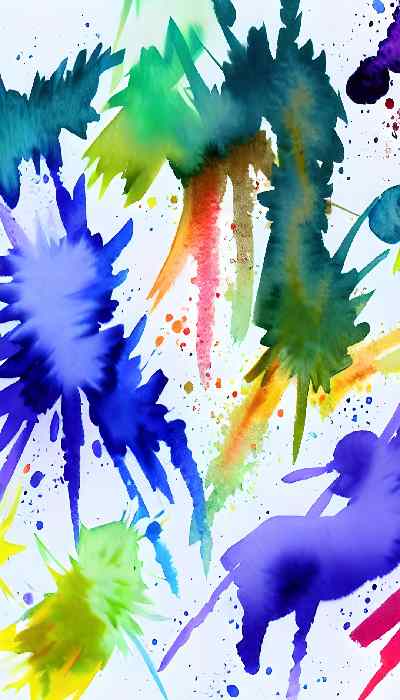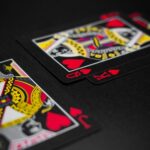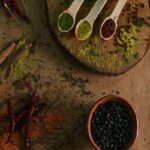Are you interested in learning how to paint with watercolors? Watercolor painting is an exciting way to express yourself and create beautiful works of art. It’s one of the oldest painting techniques and has been used by artists for centuries.
With a few tips and tricks, you can learn to master the art of watercolor painting. In this blog post, we’ll cover everything you need to know about watercolor painting, from supplies and techniques to helpful tips and tricks. Whether you’re a beginner or an experienced artist, you’ll find something new to learn about watercolor painting. So read on and let’s get started!

What is watercolor painting?
Watercolor painting is a beautiful and expressive art form that utilizes translucent and vivid water-based paints. It is an especially popular form of painting due to its versatility and relatively low maintenance compared to other painting mediums.
Watercolor paint is made up of color pigments suspended in a water-soluble binder, typically gum arabic. Watercolor paintings typically appear softer and more muted than their oil or acrylic counterparts, due to the transparent nature of the paint.
The technique requires quickness and practice to capture the delicate and subtle effects that are achievable with watercolors. It is often used by professional artists to create landscapes, portraits, botanicals, and abstracts.
The supplies you need

When it comes to watercolor painting, the supplies you need depend on the type of artwork you want to create. For a basic setup, all you need are paints, paper, brushes, and water.
Paints: Watercolor paints come in either pans, tubes, or liquid form. Pans are solid blocks of paint that are held in a plastic container. Tubes are similar to oil paints and offer a more intense color than pans. Liquid watercolors are highly pigmented and easy to mix for vibrant colors.
Paper: Watercolor paper is usually made of cotton or wood pulp and is thicker than other types of paper so it doesn’t warp or buckle when it gets wet. Look for paper that is at least 140lb (300gsm) in weight and “cold press” so the texture is slightly bumpy and won’t create bubbles.
Brushes: Brushes come in various sizes and shapes to suit different painting techniques. A round brush is ideal for most painting tasks, but there are also flat fan and rigger brushes. Synthetic brushes will provide the best results with watercolor paints.
Water: Water is essential for thinning out your paints and adding washes of color. Use distilled or filtered water if possible as this will avoid any impurities from tap water affecting your colors.
For more advanced work, you might also need additional supplies such as a palette, masking fluid, and a mister. It’s important to have the right supplies so that you can get the best results from your watercolor painting.
The best techniques for beginners
Watercolor painting is a rewarding art form, and there are many techniques that you can use to get started. Here are some of the best techniques for beginning watercolor painters:
- Wet on wet: This technique involves laying down a wet base layer of paint and then adding additional layers of wet paint on top of it. The paints will blend and create a soft, almost dreamlike look.
- Dry brushing: This technique involves using a dry brush to lay down small amounts of paint over a damp surface. This will create a textured look with more visible brush strokes.
- Glazing: This technique involves applying multiple layers of thin, transparent paint over a dried surface. The layers will build up, giving the painting a glossy look.
- Lifting: This technique involves wetting the paper, then lifting off areas of paint with a dry brush or paper towel. This will give your painting interesting texture and depth.
- Glazing with masking fluid: This technique involves applying masking fluid to an area of the painting, then glazing over it with transparent paint. When the masking fluid is removed, the white paper will be revealed beneath the glaze, creating highlights and texture.
By mastering these techniques, you’ll be well on your way to creating beautiful watercolor paintings!
Tips for improving your watercolor painting

- Start with the basics – Learning the fundamentals of watercolor painting is essential for achieving the best results. Brush up on the basics such as color theory, composition, and technique before attempting more complex pieces.
- Invest in quality supplies – Quality watercolor supplies can make a big difference in the outcome of your painting. Invest in high-quality paints, brushes, and paper for the best results.
- Practice regularly – As with any skill, practice makes perfect when it comes to watercolor painting. Aim to create one or two paintings each week to improve your skills and gain more confidence.
- Keep experimenting – Don’t be afraid to try out different techniques and materials in order to discover which works best for you. Experimentation is key to becoming a better painter.
- Take inspiration from others – Get inspired by looking at other artists’ work and reading books or articles on watercolor painting. You never know what you might learn!
- Find your own style – Don’t be afraid to create art that’s unique to you. Developing your own style will take some trial and error, but will ultimately lead to greater satisfaction with your art.
Troubleshooting common mistakes
Watercolor painting can be a tricky craft, and it’s easy to make mistakes along the way. Here are some of the most common mistakes and how to fix them:
- Improper paper. Watercolor paper is designed to absorb water and pigment better than other papers, so using the wrong paper can cause your colors to bleed and your paint to look dull or blotchy. Make sure to use thick, cold-press watercolor paper for the best results.
- Too much water. It’s easy to get carried away with adding water to your paints, but too much water will dilute the color and make your painting look thin and washed out. Start with small amounts of water and add more as needed.
- Not enough layers. Watercolor paintings often require multiple layers of paint to create depth and dimension. For example, you may need to apply several layers of blue before moving on to other colors.
- Not letting layers dry completely. It’s tempting to jump right into the next layer without waiting for the previous layer to dry, but this can cause colors to mix and muddle together. Always wait for each layer to dry completely before adding another one.
- Overworking a painting. Once you’ve completed a painting, it’s important to step back and take a break from it before making any changes or adjustments. Taking a break will allow you to look at the painting objectively and decide if any changes should be made.
With these tips in mind, you should be well on your way to creating beautiful watercolor paintings! Remember, practice makes perfect, so don’t be afraid to experiment and make mistakes along the way. With patience and dedication, you’ll soon be creating stunning works of art!
Conclusion
Watercolor painting is a fun and creative activity that can help you express your creativity. While it may seem daunting at first, anyone can learn the basics of watercolor painting with the right supplies, techniques, and tips.
It’s important to be patient with yourself and take things one step at a time. With practice and patience, you’ll be able to make beautiful watercolor paintings that you’ll be proud to share with the world. So grab your supplies, find a comfortable spot, and start painting!
Also, check out the latest articles “Embroidery machine” and “Painting with a twist“
Hi I’m Bilal Malik, a digital marketing and blogging expert holding years of experience.










